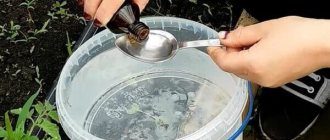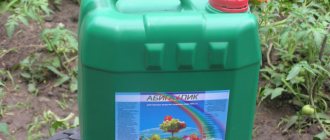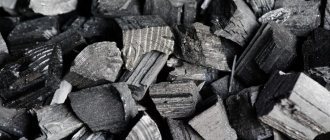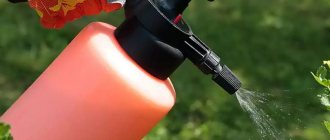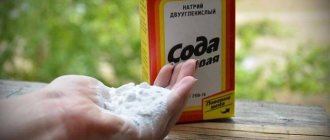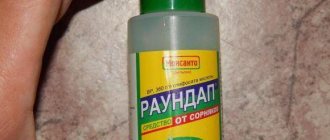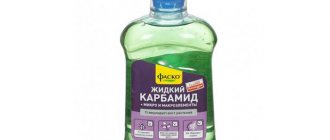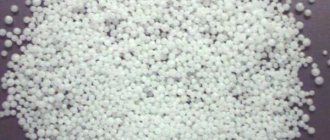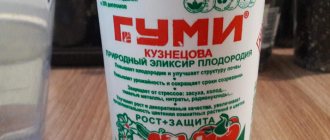Category: Organic fertilizers Reading time: 8 min · Views: 997
When problems with yield begin in your garden plot, it’s time to pay attention to the acidity level of the soil. If this level is 7 (with a general pH scale of 0 to 14), the soil is neutral. Above 7 – it is alkaline. An indicator of poor soil health will be if the pH begins to approach zero. And this means that the soil needs to be limed. Egg shells as a fertilizer reduces acidity or even makes the soil in the garden beds slightly alkaline, which is good for plants in most cases.
There are many methods of liming. You can do this with calcite, dolomite, limestone; the corresponding preparations can be bought at gardening stores. Or you can take a different path, saving money and getting an effective neutralizer of excessive soil acidity and, in addition, an excellent fertilizer. We are talking about a simple eggshell.
Composition and beneficial properties
The shell is a natural source of nutrients that are easily absorbed by plants. You should not throw away this natural fertilizer; it is better to learn how to use it correctly.
The chemical composition of the shell depends on the breed and age of chickens, diet, and time of year:
- 90-93% comes from easily digestible calcium;
- nitrogenous substances contain up to 3.3%;
- water – 1.6-2%;
- microelements;
- traces of lipids.
Calcium perfectly regulates soil pH, eliminating the acidity of the soil.
The shells have a porous structure, which provides the roots with access to oxygen, removal of moisture and carbon dioxide, which is valuable for plants.
The egg shell contains 27 microelements in a form accessible to plants, which includes:
- iron;
- phosphorus;
- zinc;
- sulfur;
- magnesium;
- silicon;
- potassium;
- manganese;
- fluorine;
- molybdenum.
Truths and lies about shells
Using shells in the garden can not only help the plants, but also cause harm. Or waste valuable raw materials. Internet sites, gardening magazines, and country neighbors advise where and how to use eggshells. Separating the wheat from the chaff can sometimes be difficult.
Absolutely harmless
Not true. Plants that prefer acidic soils should be fertilized with shells carefully, making sure to add additional doses of iron, vinegar or citric acid to the “diet”.
Comment! Most annual garden crops respond positively to mild alkalization.
Waste raw eggs must be thoroughly washed or shells collected exclusively from boiled eggs. With the remains of bird waste products, infection can enter the soil.
Can you sprinkle as much as you want?
It depends on what plants. Typically, egg shells are used sparingly. In addition, they decompose for a long time, gradually releasing useful substances.
For annual garden crops that grow in acidic soil and love calcium, crushed shells can really be sprinkled without restrictions. At first, it will gradually release nutrients and serve as feeding. After harvesting, egg waste deoxidizes the soil and improves its structure.
On acidic soils, shells should be used carefully. A small amount is placed directly into the hole or the plants are watered with infusion.
Before feeding perennials, you need to find out their needs and not feed those crops that do not like calcium.
Protects from pests
Shell is not a panacea, but it can really help. You need to know how it works and apply it accordingly.
Moles
But the moles don't care. They will dig their way half a meter from scattered or buried shells. To protect the area completely, you will need to completely cover it with egg waste.
Medvedka
Helps. Just don’t grind the shell into powder - the point is to injure the pest’s delicate insides with sharp edges, then the mole cricket will die. The prepared material is scattered under the plants. To attract mole crickets, pieces of shells are moistened with vegetable oil, preferably unrefined.
Slugs
It works, but only if eggshells are used correctly. If you simply scatter it under the plants, it will be of little use. It is necessary to build a barrier impenetrable to slugs and snails - a continuous line enclosing a small area with plants. Soft-bodied slugs will not be able to get over the barrier.
Comment! If slugs have already laid eggs on or under plants, the barrier will not help.
White butterfly
Oddly enough, this is a great way. Even the small brains of butterflies are imprinted with primitive instincts: if the territory is occupied, there is no point in going there, there will not be enough food.
The most effective method is to spread large pieces of white egg shells on garden crops with large leaves. Just don’t scatter them around the area, but place them directly on the plant.
Can be quickly assembled
A standard egg weighs 40-60 g. The shell makes up 12% of its mass, on average - 7 g. You can calculate how much raw material you can collect in a year yourself, knowing the approximate consumption standards of the family.
Suitable for liming the area
Is it true. Only for 1 sq. m you need 400-800 g of raw materials, it all depends on the acidity of the soil. You can only use ground shells.
A reasonable question: isn’t it easier to buy lime or dolomite flour?
Use for growing seedlings
Plants that have very small seedlings, such as lobelia, can be planted in large, intact shells. It is impossible to keep seedlings in such “cups”.
To prevent egg shells from falling, they are usually placed in trays. As soon as the seedlings grow, they will stretch out due to insufficient lighting, and it is difficult to place the containers further from each other. Therefore, the feasibility of such cultivation is questionable.
Labor costs with this method of growing seedlings negate financial savings:
- Eggs must be beaten carefully to maintain the integrity of the shell;
- then it is thoroughly washed outside and inside;
- make a small hole at the bottom;
- Containers must be handled carefully so as not to crush the egg shell during care and when moving to the garden;
- Before planting, the shell must be carefully broken, it should crack, but the root of the plant should remain intact.
The last point is especially difficult and time-consuming to complete. It is better to first try growing a small number of seedlings.
Comment! Egg shells have no particular advantages over jars of yogurt or sour cream.
How to prepare fertilizer
Preparing organic fertilizers at home is practiced by both experienced gardeners and beginners. Folk remedies and methods are used to grow healthy and tasty foods without nitrates and chemical elements.
It’s easy to make fertilizer from eggshells at home yourself. It can be prepared in advance or immediately before use.
- Pour 100 g of crushed eggshells, onion peels, nettle leaves and 50 g of dolomite flour into 1 liter of boiling water. Close the lid tightly and leave to infuse for at least 20 hours. Before use, the solution must be filtered and diluted with water at the rate of 1 part solution per 10 liters of water. Nettle greens can be replaced with walnut leaves, and dolomite flour with wood ash.
- For emergency use, 100 g of crushed shells are poured into 3 liters of water and boiled for at least 3-5 minutes. The resulting composition is filtered and mixed with 5 liters of water.
Reference! When infused for a long time, the finished solution emits an unpleasant, characteristic hydrogen sulfide odor. This is a sign that the fertilizer is ready for use.
Egg waste is also used to enrich irrigation water with microelements. To do this, the washed and cleaned shells are placed in a container of water intended for irrigation. You can only add water throughout the season and add shells if necessary. The more saturated the solution, the more water will be needed to dilute it to the required concentration.
An infusion of eggshells can be effectively used both in the garden and in the vegetable garden.
Cooking recipe on video:
Procurement and storage of raw materials
The shells of fresh eggs need to be washed and dried for 3-5 days. Whether to grind it depends on the use:
- to deoxidize the area, fertilize and fight the Colorado potato beetle, the raw materials are ground into powder;
- when used against mole crickets and wireworms, dry shells are crushed into small pieces with a rolling pin or a hammer;
- Only large shells will help you cope with the white butterfly.
You need to store raw materials in a dry place, putting them in a jar, paper bag or thick fabric bag.
Use in the garden
In what form and how to use eggshells in the garden (as a fertilizer, deoxidizer, or in other ways) depends on the task at hand.
Which plants do and do not like calcium?
They especially love calcium:
- melons (watermelons, melons);
- all types of cabbage;
- German irises;
- oak, beech, maple, plane tree, ash, larch;
- euonymus;
- boxwood;
- lavender;
- carnation;
- clematis;
- saxifrage;
- young;
- peony;
- clematis;
- European fir;
- black elderberry;
- feather grass;
- cornflower;
- hellebore;
- anemone.
Adding infusion when growing green onions will provide exceptionally abundant harvests.
Without calcium they suffer:
- stone fruits (plum, cherry);
- pome trees (pears, apple trees);
- tomatoes (without calcium the pulp becomes excessively hard);
- potato;
- zucchini;
- lavender;
- cypress trees;
- dogwood;
- ferns;
- legumes;
- greenery;
- citrus.
There are plants for which calcium is contraindicated:
- raspberries;
- carrot;
- beet;
- turnip;
- onion;
- radish;
- rhododendrons;
- hydrangeas;
- orchids;
- azaleas;
- gardenias;
- chestnut;
- some types of pine trees;
- all swamp crops;
- mosses.
As a fertilizer
The smaller the fraction of crushed shells, the faster macro- and microelements are absorbed and excreted:
- the powder will begin to act after about a month;
- water extract – after a week;
- crushed shells, depending on the size of the pieces, no earlier than after 1-4 months.
To grind into powder, use an old coffee grinder, rolling pin, mortar, or hammer.
Comment! The shells of homemade raw eggs contain the maximum amount of microelements.
Liquid fertilizers
It is important to know how to properly make a shell extract. The work order is as follows:
- the shells of 15 eggs are ground;
- pour 1 liter of water;
- cover with a lid (during the preparation of fertilizer, hydrogen sulfide is released from the shells);
- insist for a week;
- Before use, dilute with water in the following proportion: 1 part infusion to 3 parts water.
You can feed any crops that need calcium (microelements are definitely necessary for plants).
Attention! If the plant begins to turn yellow (the leaves turn yellow, the veins remain green), the fertilizer should be stopped. Such symptoms indicate plant chlorosis and excess calcium in the soil.
Powdered fertilizers
The feeding will not take effect immediately, but it will work for a long time - until the shell decomposes. It is better to use it in the spring, pouring it directly into the hole for annual crops, and shallowly embedding it in the soil under perennials. When the effect of the fertilizer ends, the plant will exit the phase of active growth and absorption of nutrients.
Ground shells should be used for crops that require a constant supply of small doses of calcium.
Shell pieces
When planting, crushed but not crushed shells are placed under the roots of trees and shrubs that require additional doses of calcium. It will slowly decompose, supplying the substance to plants for 3 years.
Soil deoxidation
In order for the shell to act as quickly as possible when the soil deoxidizes, it must be boiled or calcined in the oven, then ground into dust. For 1 sq. m of garden will require 400-800 g, otherwise the operation is of little use.
It is better to check the acidity of the soil in the laboratory. Excess calcium for plants is no less undesirable than its lack.
Advice. Soil with a low calcium content and an acidic reaction can be recognized by the fact that the following plants grow well on it - clover, horsetail, and sorrel.
Powdered eggshells should be evenly distributed throughout the garden before digging or plowing.
Pest Control
How eggshells can be used to control garden pests is shown in the table.
| Pest | Mode of application | Note |
| Colorado beetle | Pollination of bushes with finely ground powder | |
| Medvedka | Small pieces are moistened with oil and dropped in places where the pest accumulates. | Don't go overboard with oil |
| Slugs and snails | An impenetrable barrier is made around the bed from broken egg shells. | |
| Wireworm | The pest loves acidic soils. Adding additional doses of calcium reduces acidity. | |
| White butterfly | Large pieces of shells are laid out on cabbage leaves | Choose white eggs |
Mulching
Not the best idea. It’s not pretty, when the shell of the eggs decomposes it stinks, and it stinks strongly, and the benefits are questionable. And you need a lot of raw materials.
Can only be used on acidic soils for calcium-loving plants.
Advice. To get rid of the unpleasant smell of decomposed protein, the inner part with the shell is thoroughly washed with running water and placed in an open container to dry.
Accelerating seed germination
Almost all garden crops grown from seedlings respond well to calcium. When the seeds are immersed in the ground, they are sprinkled with a pinch of ground shells, then with soil.
Compost and other uses
- The shells can be thrown into the compost pile. To do this you need to crush it. It will decompose over a long period of time (about 2 years), reducing acidity and enriching the compost mass.
- It makes an excellent fertilizer if burned in a fire and used along with the ash.
- Crushed and scalded with boiling water or boiled, the shells can be a delicacy for birds and should be added to garden bird feeders to help control pests.
Growing plants in egg shells
Anyone who does not have a large area for sowing seedlings has the opportunity to create a vegetable garden in eggshells. A convenient option in cases where there are no plastic cups on hand.
As plant adaptations, shells are also useful in that they immediately strengthen young plants. Relevant and beneficial methods of application are for seedlings of cabbage, tomatoes, melons or peppers.
There are enough proteins to make the rearing of young animals 2-3 times faster. It is convenient to grow greens: parsley, dill or onions.
